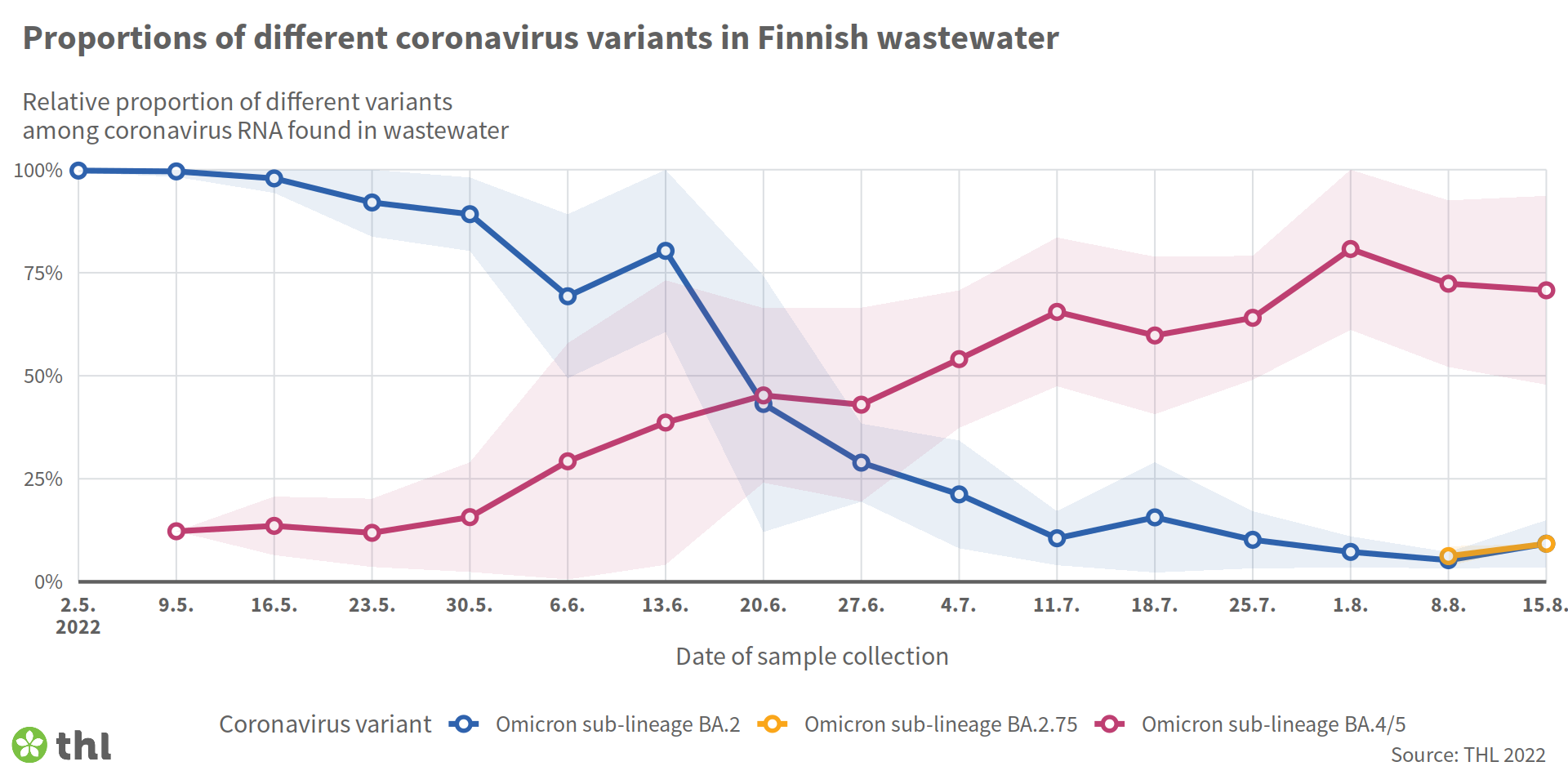Coronavirus wastewater monitoring: amount of coronavirus has started to decrease throughout the country
The amount of coronavirus in wastewater has started to decline throughout the country. According to the wastewater monitoring carried out by the Finnish Institute for Health and Welfare (THL), the amount of the virus has been decreasing since the beginning of August.
The most recent wastewater samples were collected on 4–5 September. Based on the samples, the amount of coronavirus continued to decline in all wastewater treatment plants involved in the monitoring, with the exception of Helsinki, where the decrease plateaued.
Measured levels of coronavirus genetic material, or RNA, in wastewater have not been this low since January 2022.
The number of new laboratory-confirmed COVID-19 cases has also decreased in recent weeks.
Changes to weekly coronavirus wastewater monitoring report
The number of municipalities involved in coronavirus wastewater monitoring has been reduced. Going forward, monitoring will continue on a weekly basis at nine wastewater treatment plants in Espoo, Helsinki, Joensuu, Jyväskylä, Kuopio, Oulu, Tampere, Turku and Vaasa. Additionally, samples will be collected once a month from the Lappeenranta, Pietarsaari, Rovaniemi and Seinäjoki wastewater treatment plants. The results will be published once a week on Fridays at 12 noon on our website.
The graphs in the weekly report on coronavirus wastewater monitoring have been updated. The updated weekly report published on Friday 9 September 2022 displays both the amount of coronavirus in wastewater and the number of cases detected in the treatment plant network area since August 2020. In addition, the amount of coronavirus RNA can be displayed either on a logarithmic scale indicating orders of magnitude or on a linear scale indicating the actual measurement value.
The total amount of coronavirus RNA (log10 RNA copies/ 1,000 persons /day) and the number of laboratory-confirmed COVID-19 cases in the treatment plant areas included in the Finnish wastewater sample monitoring between 3 August 2020 and 5 September 2022. Last week, a trend of the last five measurements started to decline.
Wastewater monitoring charts the total amount of coronavirus genetic material and the proportions of different coronavirus variants in Finnish wastewater. As a major part of the infections are only verified by home testing, laboratory-confirmed cases do not reflect the prevalence of infections. The situational picture of the numbers of coronavirus and virus variants observed by wastewater monitoring is independent of test activity, and it supports other epidemic indicators.
Further reading: Weekly report on wastewater monitoring for coronavirus (in Finnish)
First wastewater observations of the BA. 2.75 subvariant of omicron in August
As viruses multiply, mutations occur in their genome. Mutations are part of the natural evolution process of viruses.
Currently, the omicron BA.4/5 subvariant is the most common coronavirus variant in Finnish wastewater. Distinguishing between the BA.4 and BA.5 subvariants is currently not possible due to the similarity of their genomes.
The first indications of the new omicron BA.2.75 subvariant were found in Finnish wastewater on 1 August in Espoo. The observations were confirmed in the second week of August by wastewater samples from Pori and Joensuu. The latest sequencing results are from the middle of August, when the BA.2.75 subvariant was detected again in Joensuu. In August, indications of the subvariant have also been found in the follow-up study of laboratory-confirmed coronavirus cases.

Total proportions of different SARS-CoV-2 virus variants in Finnish wastewater found in sequenced wastewater samples from monitored wastewater treatment plants between 2 May and 15 August 2022. The paler area represents the standard deviation from the results of different treatment plants.
Further reading: Coronavirus variants in wastewater
Further information
- Further information on coronavirus variants in wastewater
- Weekly report on wastewater monitoring for coronavirus (in Finnish)
- Coronavirus variants
- Coronavirus wastewater monitoring
Tarja Pitkänen
Chief Specialist
THL
tel. +358 29 524 6315
[email protected]
Anssi Lipponen
Senior Researcher
THL
tel. +358 29 524 7962
[email protected]



